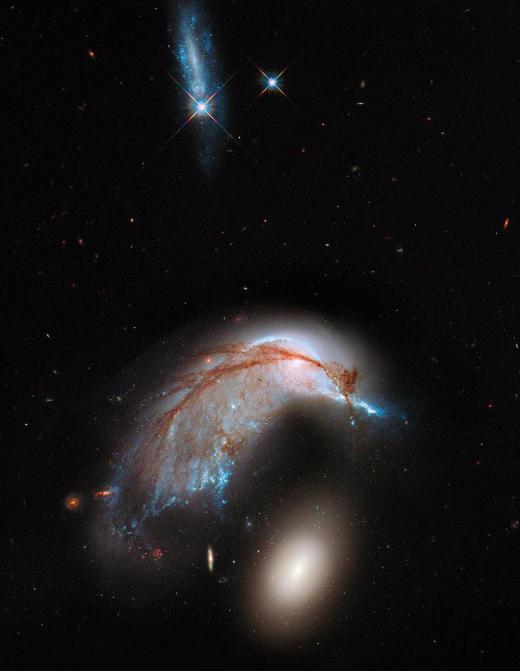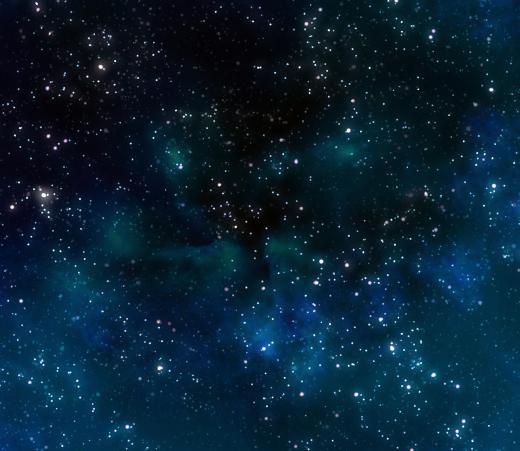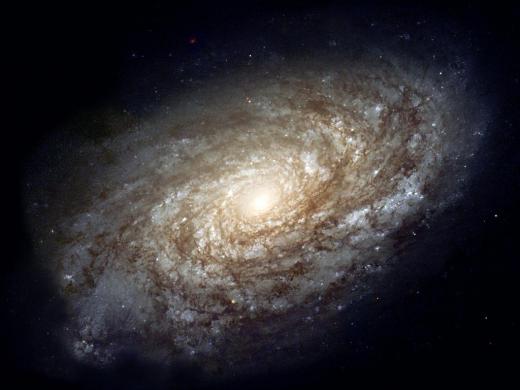What is an Irregular Galaxy?
An irregular galaxy typically refers to a galaxy that does not have a regular structure or shape, which means that it has little or no symmetry in its rotation. Irregular galaxies can also be classified according to some unusual feature that makes them different. This may include characteristics such as low surface brightness, or strange gas streams that emanate from its nucleus. Scientists estimate that irregular galaxies make up anywhere from 3% to 25% of galaxies in the universe.
Based on the standard Hubble sequence, galaxies are classified according to three types of rotation: elliptical, spiral, and lenticular. An irregular galaxy does not have any of these rotations. Accordingly, it is sometimes referred to as the fourth type of galaxy.

There are generally three classifications of irregular galaxies. The Irr-1 type usually features some type of standard structure, but not enough to be considered as part of the Hubble sequence. The Irr-2 type has no standard movement at all and often has a chaotic structure. The third type is known as a dwarf irregular galaxy. This galaxy has low levels of metallicity, which means that it is largely composed of hydrogen and helium chemical elements. Since scientists believe that, at the time of the Big Bang, galaxies were made almost entirely out of hydrogen, this may suggest that dwarf irregular galaxies are some of the oldest in the universe.

Irregular galaxies tend to share some common features. They generally have a weight that ranges from 108 to 1010 solar masses. Their diameters tend to be between 1 to 10 kiloparsecs. Its blue magnitude — a measurement of apparent visual magnitude — can range from -13 to –20. Many irregular galaxies also are distinguished by large amounts of gas and dust.

There are many ways in which an irregular galaxy can be formed. For example, one can result from a collision between galaxies. When this happens gravitational forces between separate galaxies interact, which causes an irregular type of rotation. A young galaxy can also take an irregular form, suggesting that it has not yet reached a symmetrical rotation.
Some irregular galaxies that have been identified include the Large Magellanic Cloud (LMC). The LMC is thought to be the third closest galaxy to the Milky Way. It is located between the constellations Dorado and Mensa, at a distance of 163,000 light years from Earth. Scientists speculate that its irregular shape is either the result of a collision between galaxies, or that the gravitational forces of the Milky Way are affecting its rotation.
The LMC also has high quantities of gas and dust, which is common to an irregular galaxy. Part of the LMC is the Tarantula Nebula, a very active region for star formation. No scientific connections have been made, however, between irregular galaxies and the potential to form stars.
AS FEATURED ON:
AS FEATURED ON:













Discuss this Article
Post your comments